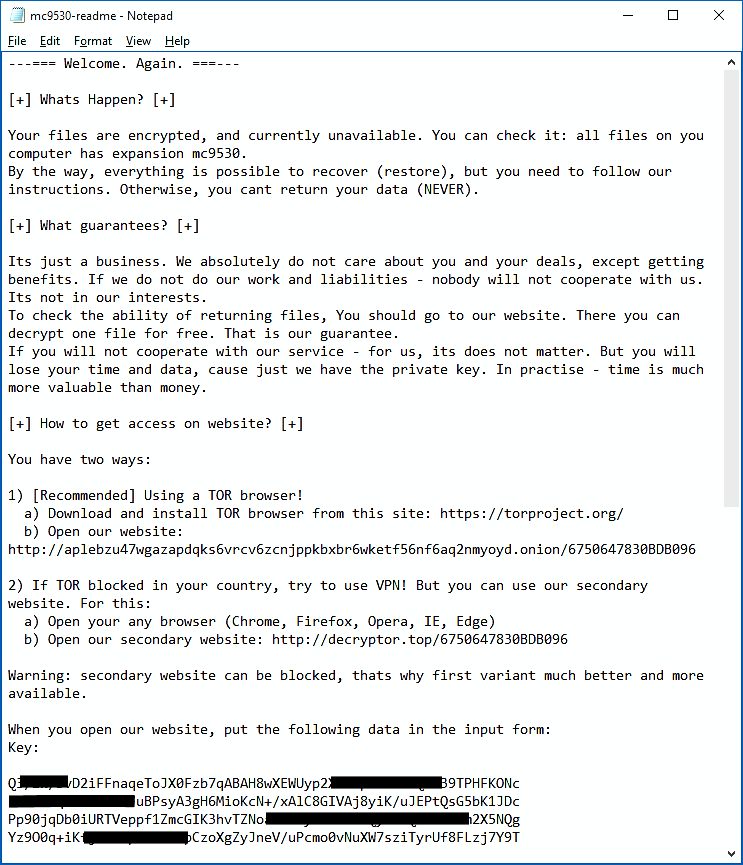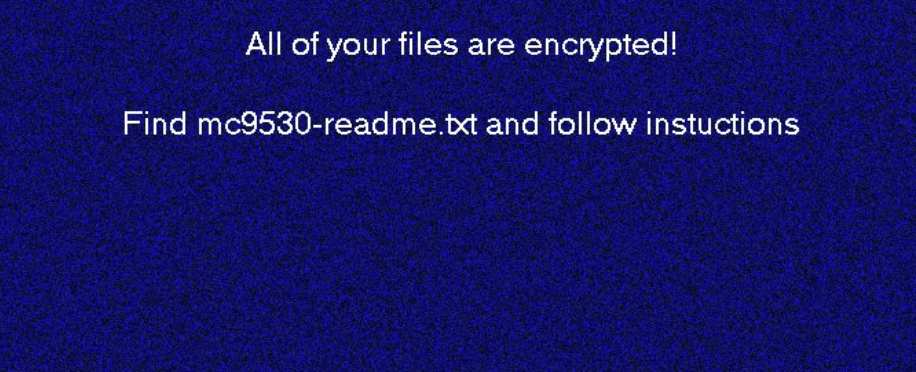What is Sodin Ransomware?
If you find that your files have changed the extension to .mc9530, then you need to urgently remove Sodin Ransomware and decrypt .mc9530 files, and here’s why. Sodin is a cryptovirus that encrypts data on the user’s computer using the Salsa20 algorithm and makes files unsuitable for further use. Sodin is similar to REvil cryptovirus, which we have already written about. This changes the extension of the infected files to .mc9530, then creates a text file mc9530-readme.txt in each folder where the encrypted file is located. Here is what this note looks like:

In the note, fraudsters describe in detail how it is necessary to pay for the decryption. The amount of this repurchase is 2500 USD. This ransom must be paid in cryptocurrency, namely in bitcoins. In addition, the user must use the Tor browser. Also, fraudsters intimidate the user, saying that any attempt to decrypt files on their own will result in the complete destruction of this data.
Sodin Ransomware can use lock screen as a note:

We categorically do not recommend you to pay the ransom for a very simple reason – attackers can simply not decrypt your files. Besides, two and a half thousand dollars is a lot of money. Use our recommendations below to remove Sodin Ransomware and decrypt .mc9530 files.
Update: Use following service to identify the version and type of ransomware you were attacked by: ID Ransomware. If you want to decrypt your files, please follow our instruction below or, if you have any difficulties, please contact us: submit@securitystronghold.com. We really can help to decrypt your files.
How to remove Sodin from your computer?
You may try to use anti-malware tool to remove Sodin ransomware from your computer. Newly advanced ransomware detection technology is able to run an instant ransomware scan, which is perfect to protect your computer in case of a new ransomware attack.
SpyHunter provides an opportunity to remove 1 detected malware for free during trial period. The full version of the program costs $39,99 (you get 6 months of subscription). By clicking the button you agree to EULA and Privacy Policy. Downloading will start automatically.
How to decrypt .Sodin files?
Once you’ve removed the virus, you are probably thinking of recovering files from encryption. Let’s take a look at possible ways of decrypting your data.
Recover data with Data Recovery

- Download and install Data Recovery
- Select drives and folders with your files, then click Scan.
- Choose all the files in a folder, then press on Restore button.
- Manage export location.
Restore data with automated decryption tools
Unfortunately, due to the novelty of Sodin ransomware, there are no available automatic decryptors for this encryptor yet. Still, there is no need to invest in the malicious scheme by paying a ransom. You are able to recover files manually.
You can try to use one of these methods in order to restore your encrypted data manually.
Restore data with Windows Previous Versions
This feature is working on Windows Vista (not Home version), Windows 7 and later versions. Windows saves copies of files and folders which you can use to restore data on your computer. In order to restore data from Windows Backup, take the following steps:
- Open My Computer and search for the folders you want to restore;
- Right-click on the folder and choose Restore previous versions option;
- The option will show you the list of all the previous copies of the folder;
- Select restore date and the option you need: Open, Copy and Restore.
Restore the system with System Restore
You can always try to use System Restore in order to roll back your system to its condition before infection infiltration. All the Windows versions include this option.
- Type restore in the Search tool;
- Click on the result;
- Choose restore point before the infection infiltration;
- Follow the on-screen instructions.
Written by Rami D

 SpyHunter provides an opportunity to remove 1 detected malware for free during trial period. The full version of the program costs $39,99 (you get 6 months of subscription). By clicking the button you agree to
SpyHunter provides an opportunity to remove 1 detected malware for free during trial period. The full version of the program costs $39,99 (you get 6 months of subscription). By clicking the button you agree to